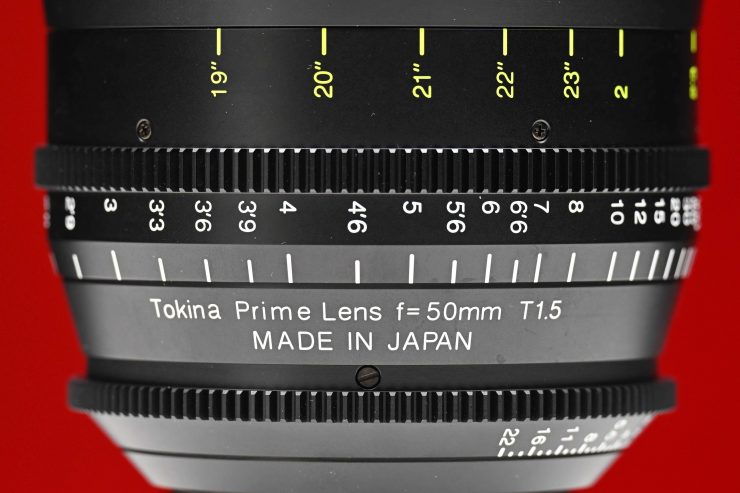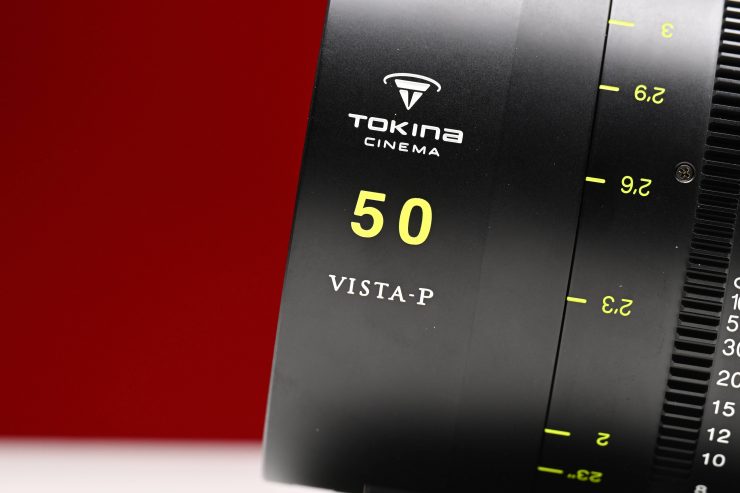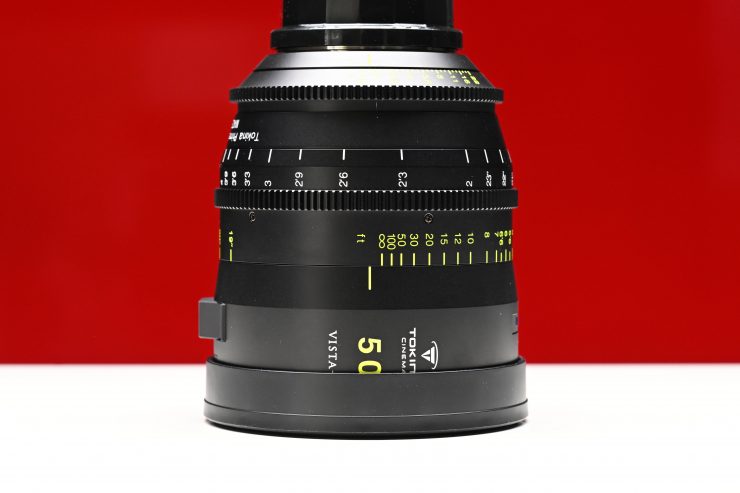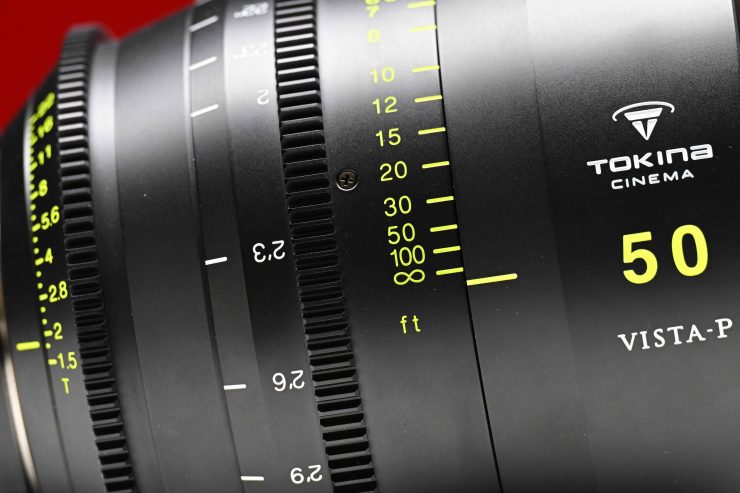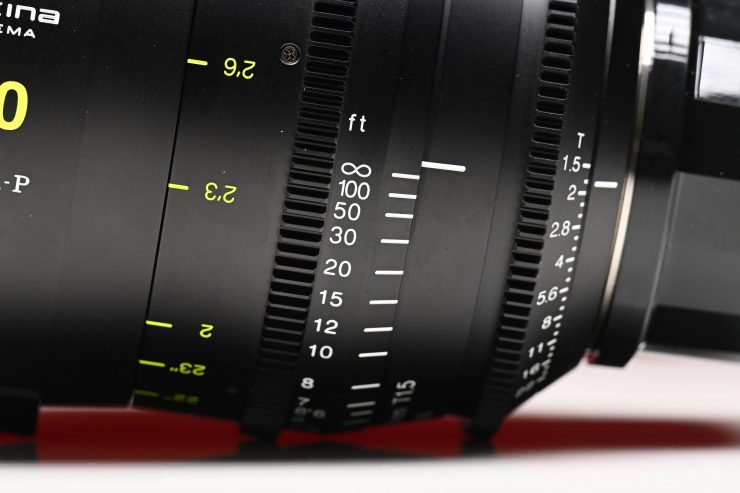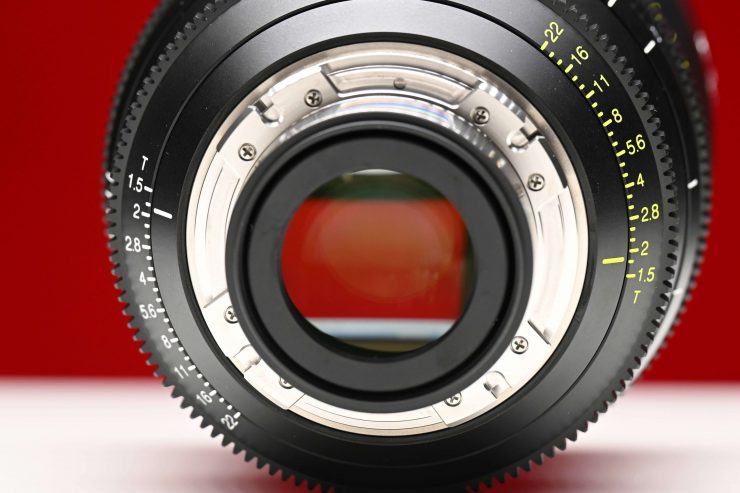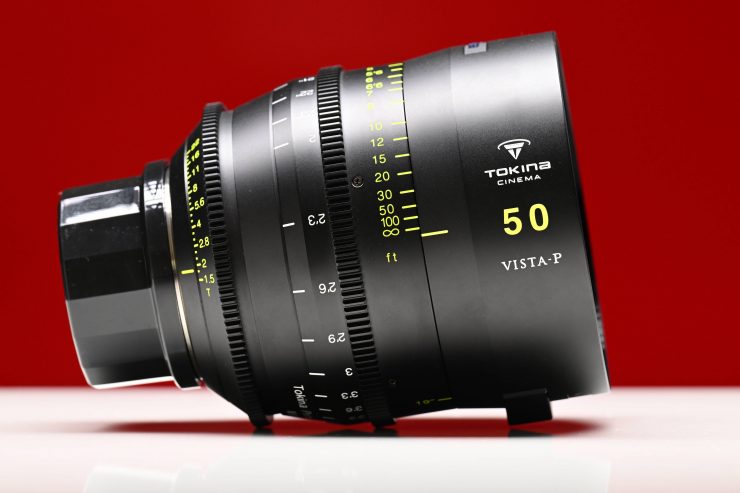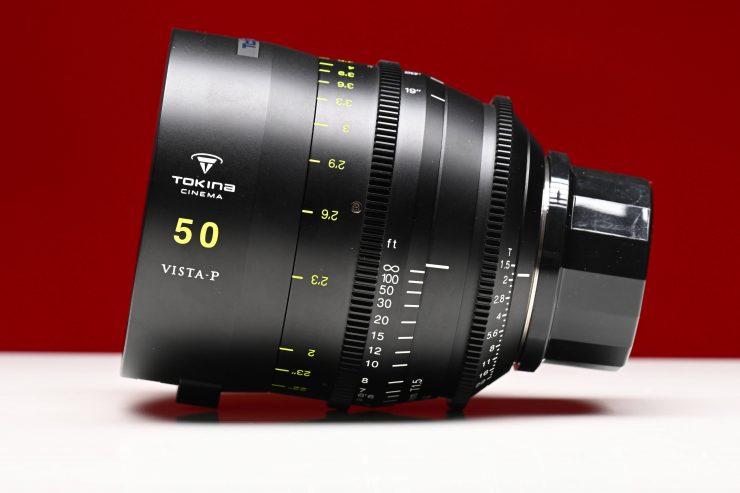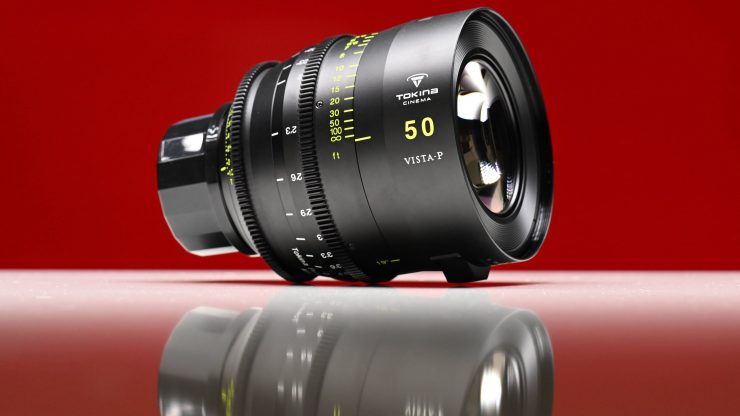
Late last year, Tokina Cinema unveiled its new Vista-P lenses, which were purposely designed to offer cinematographers a distinctive combination of vintage character but with high resolution. The lenses are claimed to produce images with a buttery, swirly, vintage-like character towards the edge of the frame, combined with incredibly high resolution in the middle.
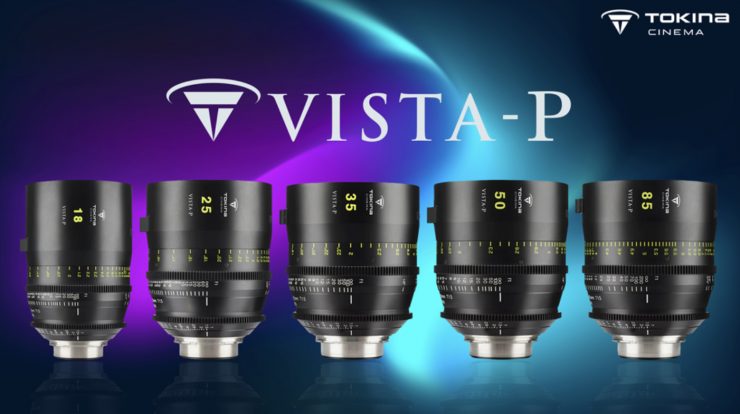
Tokina Cinema Vista Primes have been a popular choice for customization and ‘de-tuning’ by third-party manufacturers and rental houses, trying to get a less perfect image towards the edge of the frame, which is typically done by modifying the air gap between the easily accessible elements at the rear of each lens. Adding shims can move these elements further apart and does have a mild effect. To get the greatest noticeable effect, more spacing is needed between other elements deep inside the lens, which is not possible with this kind of relatively simple modification. Due to this popularity, Tokina Cinema has decided to re-engineer the Vista Primes themselves as a factory option.
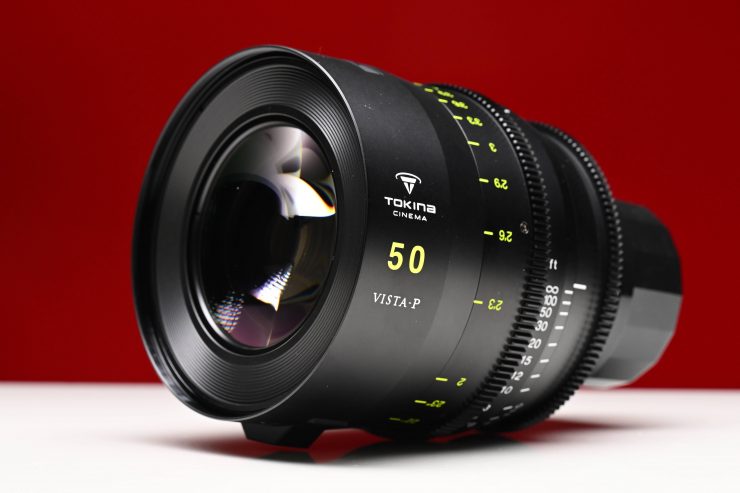
To achieve this look, Tokina Cinema has repositioned the elements throughout the design, not just at the rear of the Vista-P lenses. By moving the placement of the lens elements it has deliberately introduces strong spherical distortion. which is a characteristic more commonly associated with vintage lenses. The modifications create a lower contrast and increased distortion effect.
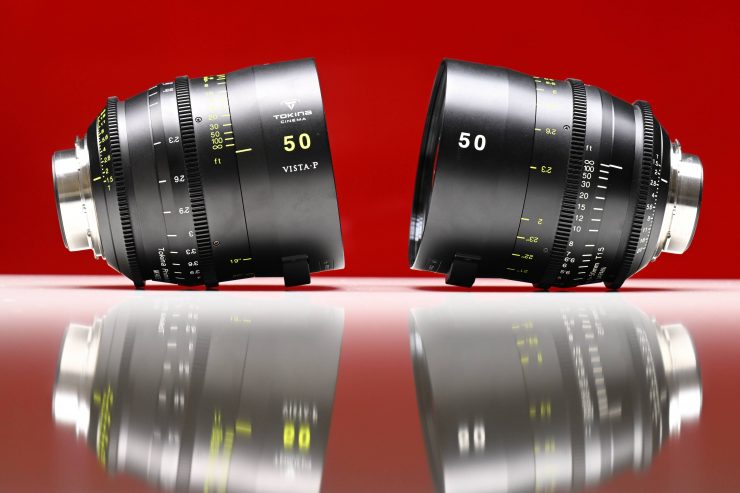
At first glance, the Vista-P primes look physically similar to the existing Vista lenses, but optically they have a slightly different look. At the edge of frame, the look is said to be similar to famous vintage lenses like the Helios-44 or Petzval with their swirl-type distortion. However, the overall look is cleaner and more modern, with resolution that exceeds traditional vintage lenses.
Now, I have to stress that this look is fairly mild and if you expecting to see a massive difference then you may well be disappointed. The look is also more noticeable depending on the focal length.

Apart from the difference in character, the Tokina Cinema Vista-P lenses retain all the other key advantages of the regular Vista Primes. They exhibit virtually no focus breathing and have image circles with a 46.7mm area of definition that can cover all large format cinema cameras. The lenses share the same 114mm front O.D. and nine blade iris, and come in PL, LPL, Sony E, EF or MFT mount.
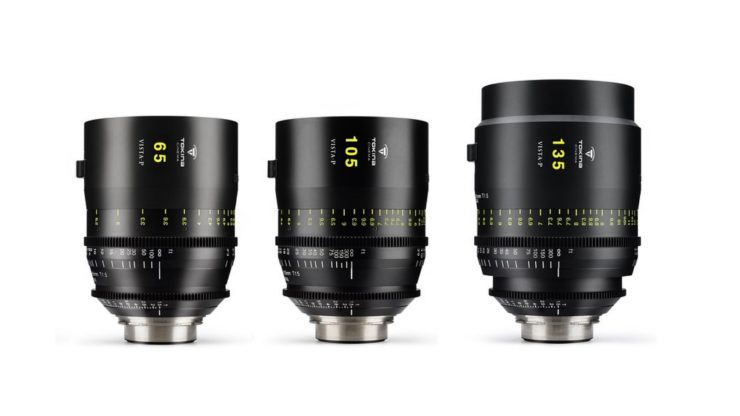
With the Tokina Cinema Vista-P series, the spherical distortion effect is most noticeable at the Vista Vision/Full Frame intended area of definition. The effect can be lessened at the edge of the frame if Super35 or smaller formats are used.
Factory Modification
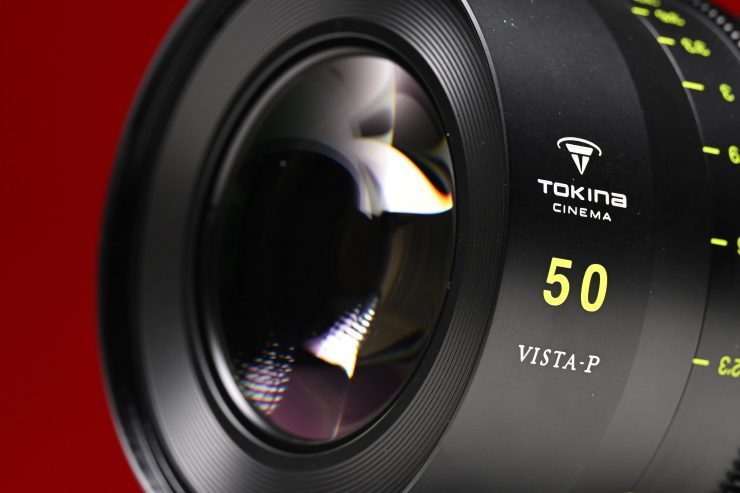
Because of the complexity of the modification it has to be performed at the Tokina Cinema factory in Japan. The Vista-P series will be available as brand new lenses already fully modified when purchased, or as an upgrade to the existing Vista prime lenses which requires the lenses to be returned to Tokina Cinema and sent to Japan for modification. Once done, the conversion is not reversible as to do so would be uneconomical.
The Tokina Cinema Vista lenses have gained a lot of traction in the industry over the last few years. They are a very comprehensive range of fast primes that cover a 46.7mm image circle that allows them to be used on full frame and larger sensors. The full set consists of the 18, 21, 25, 29, 35, 40, 50, 65, 85, 105, 135mm, and 180mm to form a 12 lens set.
The lenses have been used in quite a few feature films and TV shows.
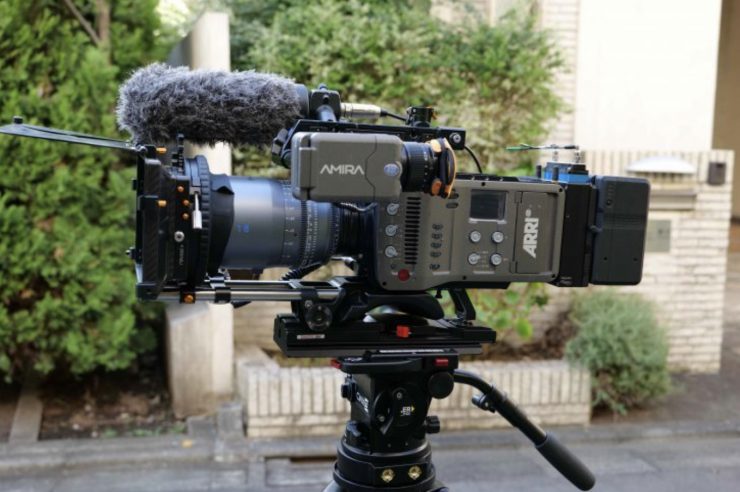
Tokina Cinema also had the Vista One lenses which were a limited-release version of the Vista Prime lenses that featured a new single-coated front element and new lens barrel aesthetic design.
Tokina Cinema Vista-P 50mm T1.5
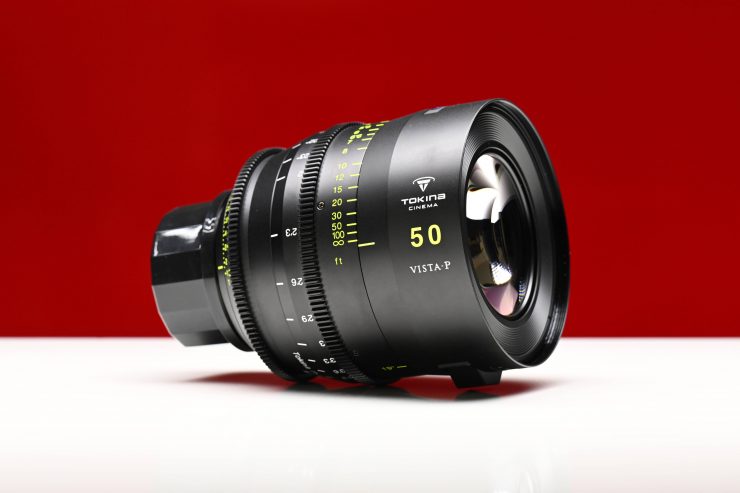
I was lucky enough to get hold of one of the few Vista-P lenses that are currently available.
Tokina Cinema Vista-P 50mm T1.5 Key features
- Full-Frame Coverage
- T1.5-22 Aperture
- Swirly Bokeh, Petzval-Type Effect
- 0.8 MOD Gears
- 300° Focus Rotation
- Vintage Look with Sharper Resolution
- Suitable for 8K Image Capture
- Clickless 9-Blade Iris
- Near-Zero Lens Breathing
- 114mm Front Diameter
- 112mm Filter Thread
- Common Gear Positions across Series

The 50mm T1.5 Vista-P Prime lens shares many of the same characteristics as the other Vista series primes. Tokina Cinema claims that distortion and chromatic aberration are virtually undetectable and that the lenses have practically no focus breathing and exhibit a gentle roll-off from subject to background.
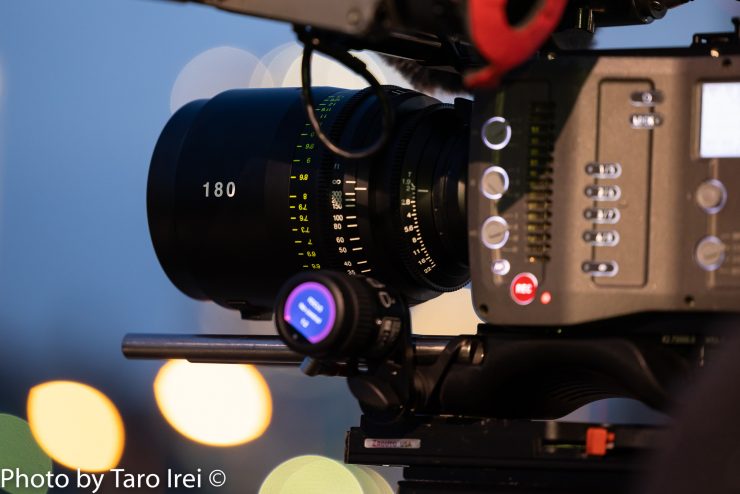
The biggest selling point for the standard Tokina Cinema Vista series was that not only do they come in a fast array of focal lengths but that they are all T1.5 apart from the 180mm. The lenses are also color-matched for consistency across the range. The Vista-P are available in the following focal lengths:
- 18mm T1.5
- 25mm T1.5
- 35mm T1.5
- 40mm T1.5
- 50mm T1.5
- 65mm T1.5
- 85mm T1.5
- 105mm T1.5
- 135mm T1.5
I would imagine that all of the focal lengths will become available at some stage.
I have previously reviewed quite a few of the lenses and I actually own the 21, 35, 50, 85 and 135mm. From my experience using the Tokinas, I found that they provide beautiful imagery, are tack sharp even wide open, and have almost no focus breathing. I personally think that the lenses are very underrated compared to a lot of the competition. The only real downside to them is their weight, and this alone could be enough to put some potential buyers off.
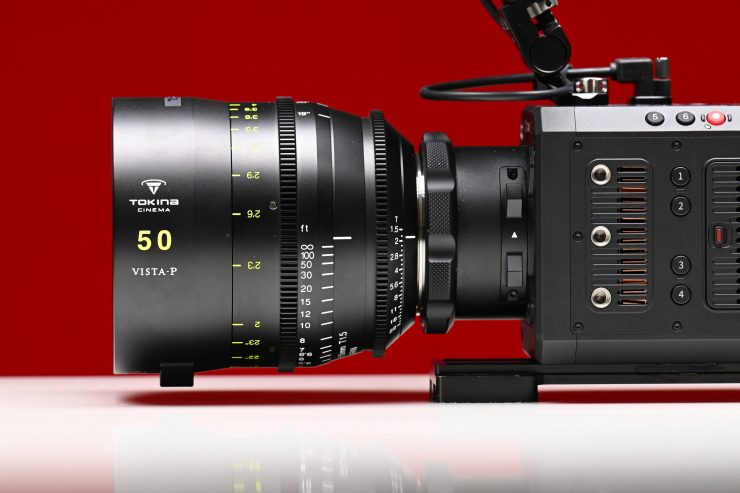
The Vista-P 50mm T1.5 shares the same form factor, lens gear position, and focus rotation (300°) as the other Tokina Cinema Vista and Vista-P prime lenses.
The lens has a 114mm front diameter that allows for easy attachment of a matte box and filters. The lens is also threaded to accept 112mm filters.
Optical Design
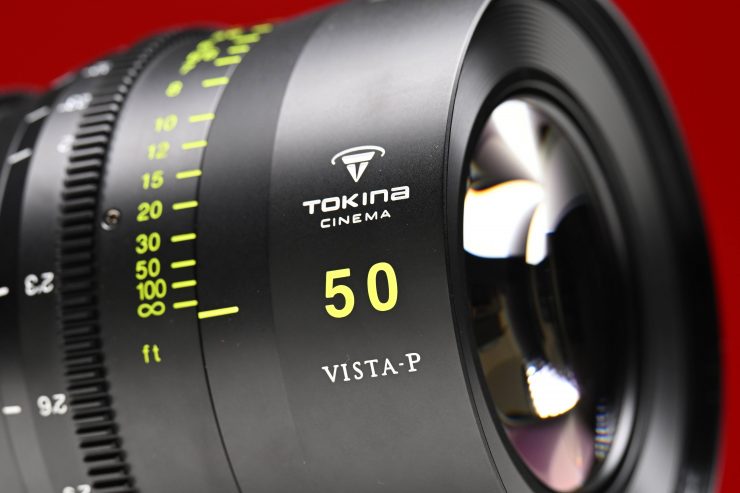
The lens features two aspherical elements and it has 9 aperture blades. The optical design consists of 10 Elements in 13 Groups.
As I mentioned earlier Tokina Cinema has repositioned the elements throughout the design, not just at the rear of the Vista-P lenses. By moving the placement of the lens elements it has deliberately introduced strong spherical distortion. which is a characteristic more commonly associated with vintage lenses. The modifications create a lower contrast and increased distortion effect.
The lens has a minimum focus distance of 18.9″ / 48 cm, with a maximum magnification ratio of 1:7.01.
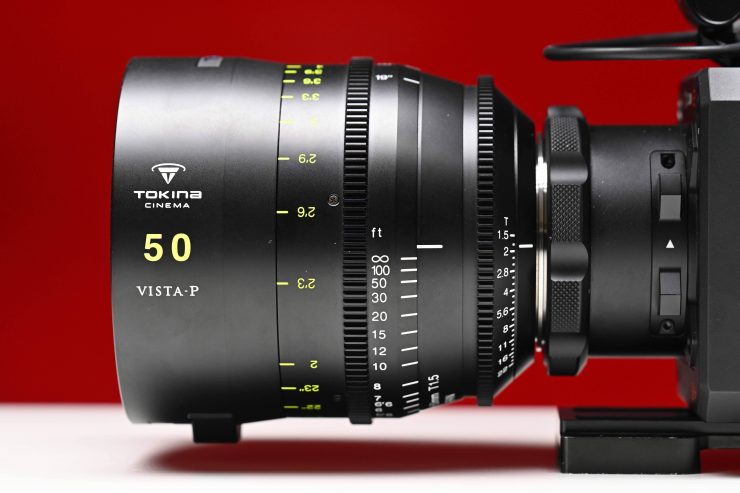
Images are fully resolved at 8K+ resolution and the lens covers both Vistavision and Super35 formats. Like all of the Tokina Cinema Vista series, it can cover a 46.7 mm image circle.
Size & Weight
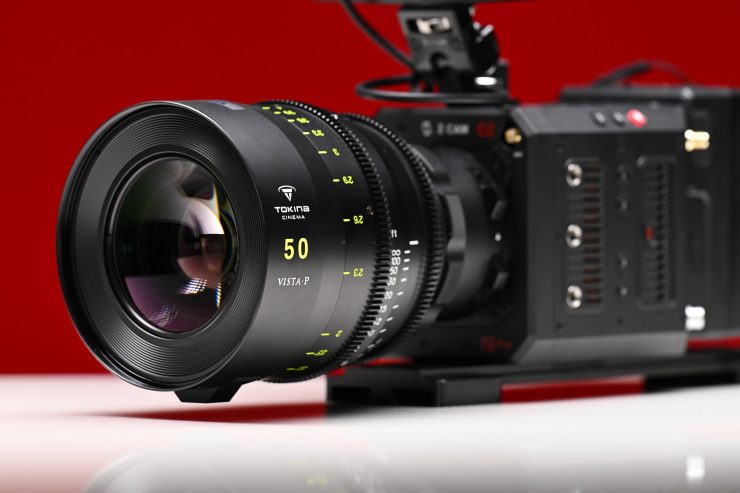
The Tokina Vista-P lenses are not lightweight options. The 50mm T1.5 weighs 4.94 lb / 2.24 kg (in PL mount).
Built like a tank
Like all of the other Tokina Cinema Vista variants, the Vista-P series, as you would expect, are very solidly made. The outside of the lens casing is hard metal and while it has been designed in a matte black finish to avoid light reflecting off it, it is susceptible to marks and scratches. Tokina Cinema recently announced a new customized color option for its Vista Prime lenses. Vista Custom as it is being referred to is a highly durable ceramic custom color treatment for any Vista Prime lens, whether new or previously purchased.
The iris and focus rings are beautifully weighted and their operation is very smooth. The focus rotation is 300 degrees, which is great if you are using a follow focus, but if you are pulling focus by hand you will find it difficult to go from the minimum focus to the maximum focus point.
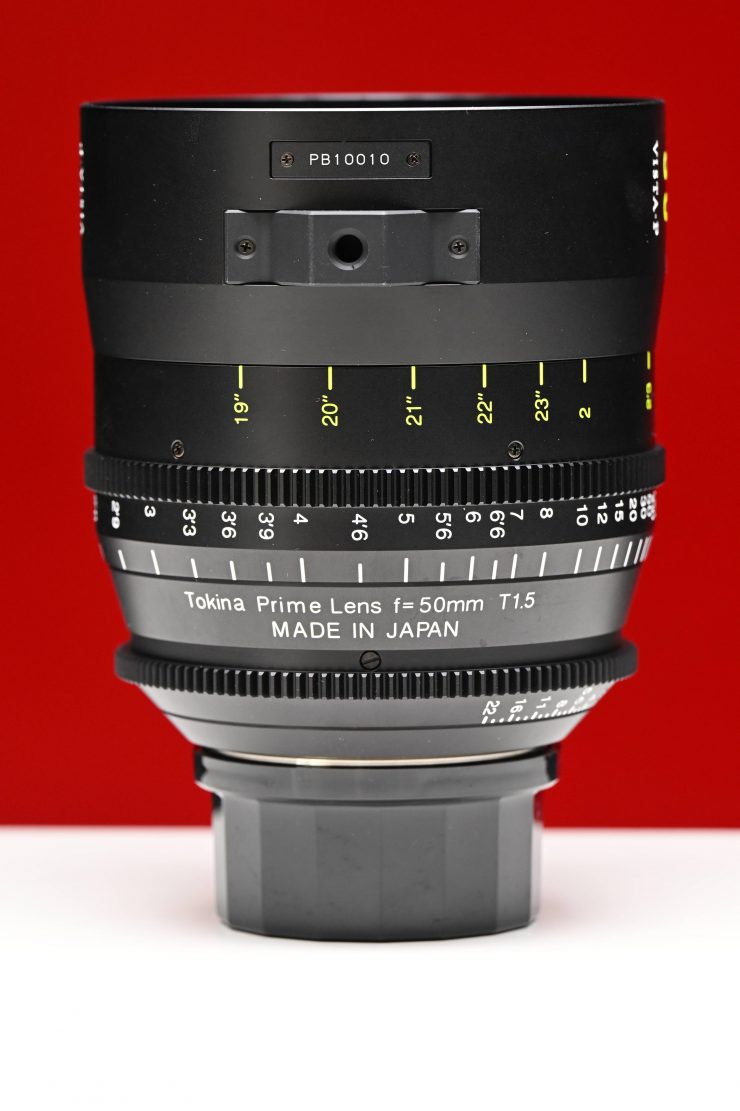
There is a built-in lens support adapter that takes a 1/4-20″ thread. Being as heavy as the lens is, it’s probably a good idea to use a lens support.
Markings
The 50mm T1.5 Vista-P has clearly marked focus and iris scales on both sides of the lens. There certainly are a lot of markings and some cinematographers or camera assistants may think there are too many. What I did discover from going into rental houses in Japan and talking to camera assistants and cinematographers who work here is that they actually like having lots of marking on lenses. As the lenses are made in Japan this is probably why there are so many markings. I personally don’t mind having lots of markings, but it may not be to everyone’s taste.
The markings are easy to read and can be seen on both sides of the lens. On the operator’s side, they are white in color, and on the camera assistant’s side, they are a fluoro yellow.
Available Mounts
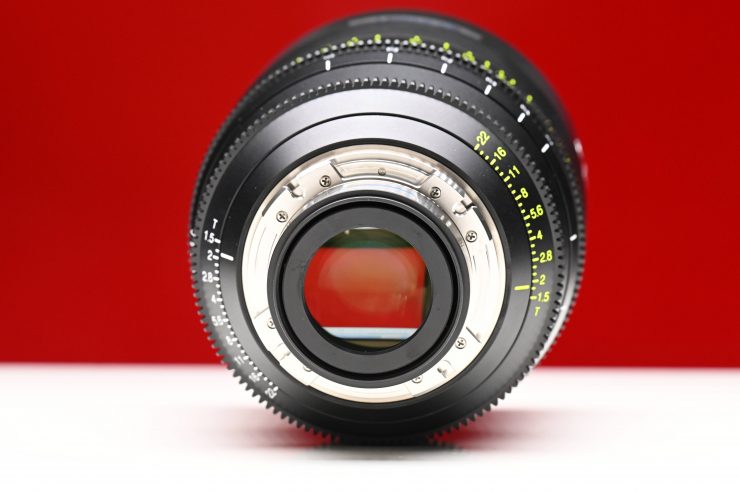
The Vista-P lenses are available in PL, Canon EF, M4/3, Sony E Mount, as well as ARRI LPL. The mount is changeable, but unfortunately, this is not something you can do yourself. I personally don’t like mounts that you can change yourself. If you don’t know what you are doing you can easily make mistakes and end up affecting the behavior of the lens if it isn’t done correctly.
Fall off and Vignetting
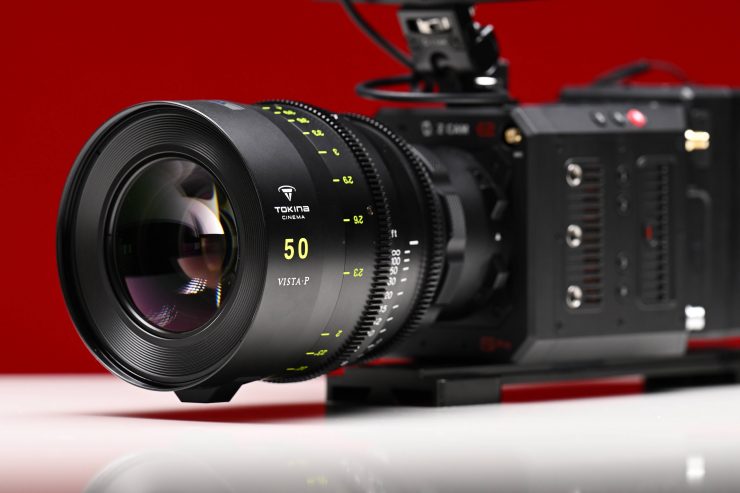
The lens has a really nice fall off and it throws a 54mm light circle so you get a nice amount of illumination across your image without any vignetting.
Sharpness
The Tokina Vista lenses are all very sharp, even when used wide open. Now, the whole concept behind the Vista-P is still to retain the same center sharpness as the standard lenses, but at the edge of the frame, the look is a swirl-type distortion that is similar to famous vintage lenses like the Helios-44 or Petzval. What Tokina Cinema has attempted to do is to make a modern and cleaner-looking lens that still exhibits some of the vintage lens characteristics but in a more subtle and controlled way.
I wanted to compare a standard 50mm T1.5 Vista against the 50mm T1.5 Vista-P to see what the differences were.
As you can see in my tests, you can certainly see the difference between the Vista-P and the standard Vista out at the edges of the frame and this is more pronounced when using the lenses at T1.5, T2, T2.8, and T4. Both the Vista-P and standard Vista have the same center sharpness.
There are subtle differences between the contrast of the lenses, with the Vista-P having slightly less contrast than the standard Vista.
Lens Flare
On a full frame sensor, the lens flare is very well contained, even when used wide open at T1.5. The lens does maintain pretty good contrast and you will get some halation when using it at T1.9, but I quite like that. Stopping down to T5.6 you can get some interesting flare, and just like at T1.9 it still retains good contrast even when shooting directly into strong light sources.
I wanted to compare a standard 50mm T1.5 Vista against the 50mm T1.5 Vista-P to see if there were any differences with the flare.
The flares you do get are very pleasing and they certainly do give the lens some character. Lens flare is very much a personal thing and whether you like the flares this lens produces only you will know.
Chromatic Aberration
The lens has very little real-world chromatic aberration. Even when used wide open at T1.5, I could see barely any chromatic aberration even when I punched into the image at 300%. Over-exposed metallic options showed no signs of color fringing. In contrast, I did find that the standard 50mm T1.5 Vista did show slightly more signs of chromatic aberration, but this was only noticeable when looking at a 300% crop.
Bokeh
Nice bokeh is something you want if you are purchasing a fast lens. The bokeh produced by the Vista-P is very nice and you can create some beautiful out-of-focus areas by using the lens wide open. There isn’t a massive difference in the bokeh between the Vista-P and the standard Vista, although with the Vista-P, it is slightly softer and smoother. Again, a lot of what the Vista-P is doing is subtle and controlled and not over the top.
Bokeh is a personal thing just like flare, and whether you like it or not will depend on your tastes.
Color Tone
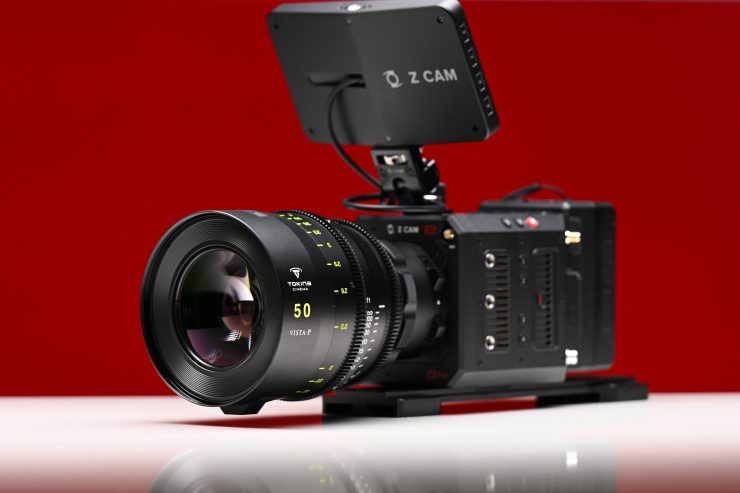
The Tokina Cinema Vista-P has a nice amount of character and doesn’t appear too clinical and uninspiring. What look you prefer from a lens is entirely going to come down to personal choice.
I found that the Vista-P and standard Vista primes can be used together without any problems. From my testing, the color tone looks basically identical. Above you can see a test where I balanced the camera and then shot a color checker chart at the same T stop with both lenses. I did this to see if there were any noticeable differences.
The color tone of a lens is something you should look at closely if you are going to be using both prime and zoom lenses from different manufacturers. Certain prime and zoom lenses work better together than others. What will work for you will also depend on what camera you are using.
Real World Thoughts
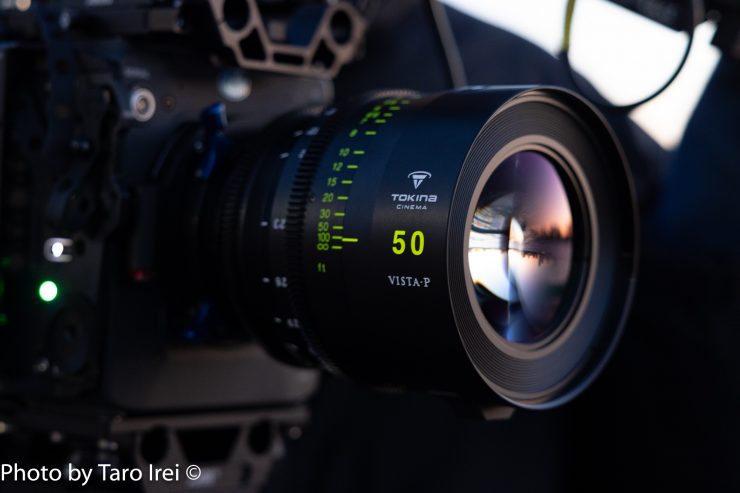
I liked using the Vista-P lens and the results I could get from it. The differences between the Vista-P and Vista can be subtle depending on what you are shooting and you need to be using them on a full frame or larger sensor to really see the differences. If you use the Vista-P on a S35-sized sensor you aren’t going to see nearly as big of a difference.
I wish I had more time to show you more in-depth footage, but I only had the lens for a limited amount of time.
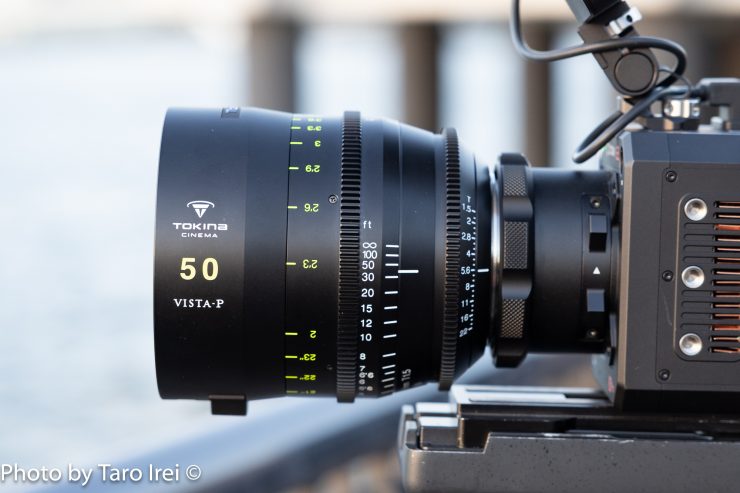
There is certainly no doubt about the optical performance of this lens. It is very sharp, and it produces beautiful bokeh. I like the slight softness out towards the edges and the out-of-focus areas do have a slightly creamier look to them.
Price & Availability
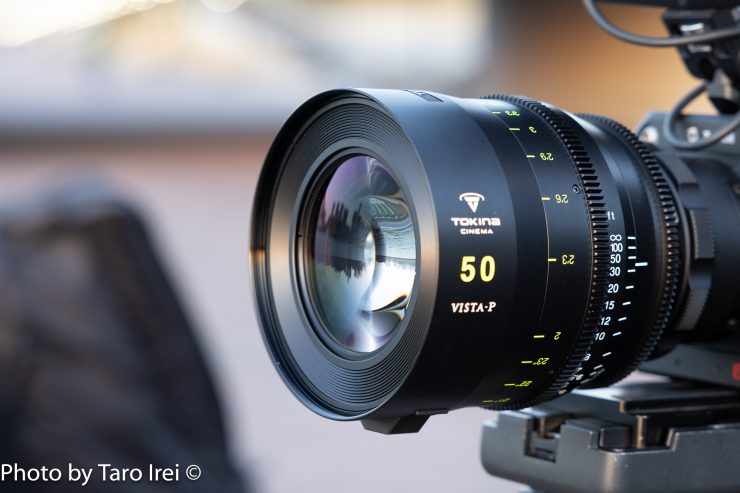
The Tokina Cinema Vista-P 25mm, 35mm, 50mm, and 85mm cost $7,499 USD each. The 18mm is $8,999 USD. The 40mm T1.5, 65mm T1.5 and 105mm T1.5 lenses cost $8999 USD each, and the 135mm T1.5 costs $9999 USD.
This does make the Vista-P lenses around $1,500 USD more than their standard counterparts.
If you own existing Tokina Cinema Vista primes, the modification will cost around $2,000 USD per lens, plus shipping.
Specifications
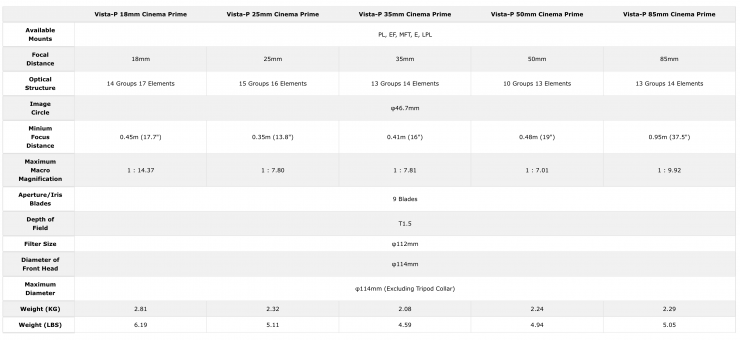
Conclusion
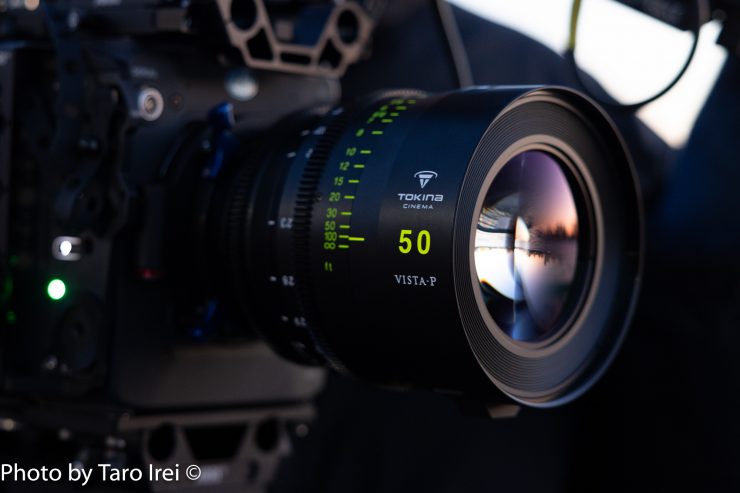
The Tokina Cinema 50mm T1.5 Vista-P is a beautiful lens. Yes, the difference between a standard Vista prime and a Vista-P is subtle, but I like how they have shown restraint.
The Vista-P series reminds me of the story of Goldilocks and the Three Bears where one of the porridges was too hot, one was too cold, and one was just right. In this case, if you make a lens that has too many vintage characteristics you can easily go too far, if you don’t add enough then it can be too plain and boring, but if you add just enough you can get a good result that satisfies both tastes.
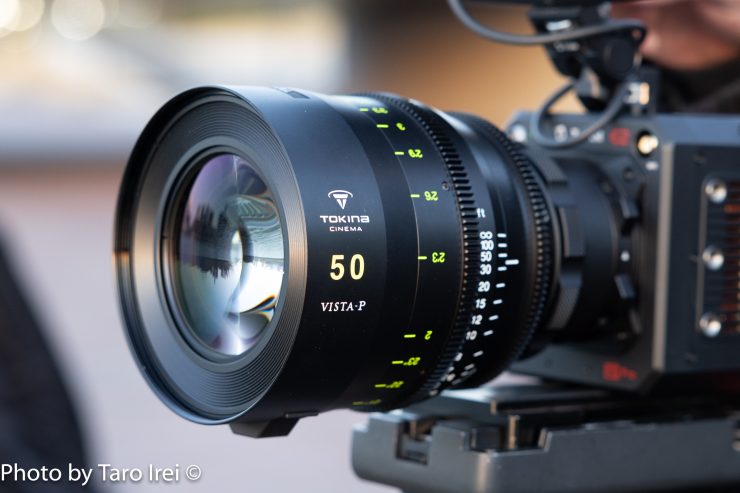
Tokina needed to walk a fine line and they have kept everything that people loved about the original Vista primes while adding some subtle characteristics that arguably satisfy a lot of cinematographers requirements.
Now you could well make an argument that paying more for a lens that has been modified to be technically optically worse makes no sense whatsoever, and that would be a valid argument. Customization is always going to incur costs, and with lenses, I think you need to have an open mind and realize that sometimes being technically as close to perfect as you can get is not always what people are looking for.
It is always good to see options being made available, especially when it comes to optics. I like how Tokina gives you various options with the Vista series and it’s also nice that you can get your standard Vistas modified into Vista-P lenses without needing to buy all new lenses.




